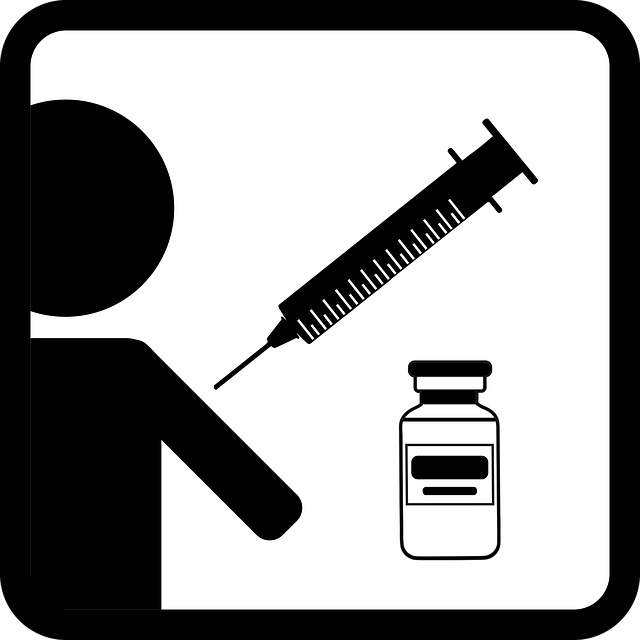Over the centuries, there were many battles between society and diseases. As medicine became more developed, people had more chances to win the fight against diseases, even the deadliest. Available medications and vaccines have helped eradicate or reduce a lot some diseases and put back under control life on the planet.
In this lesson, we will learn about VACCINES, and we are going to find out:
Vaccines are products that protect people against many diseases that can be very dangerous and even deadly. Vaccines are what prevent us from getting sick with the disease in the first place. They are different than most medicines that treat or cure diseases. Most vaccines are given by injection (needle), but some are given orally (by mouth) or nasally (sprayed into the nose).
Vaccines are made by taking viruses or bacteria and weakening them so that they can’t reproduce/replicate themselves very well or so that they can’t replicate at all.
What makes vaccines effective against disease is that our immune systems are designed to remember. When the body is exposed to one or more doses of a vaccine, our body "remembers" and we typically remain protected against a disease for years, or it may be for a lifetime. Vaccines prevent us in the first place from getting sick.

First, let's see how the body’s immune system works to protects us against disease.
Our immune system is made up of a specialized network of organs, cells, and tissues that all work together to help protect us against disease. When a disease-causing virus or bacteria enters the body, our immune system recognizes the germ as being foreign, then responds by making antibodies, that help destroy the germ. Sometimes the germ makes us sick, but when the germ is destroyed, we usually get well again. Also, our immune system remembers the germ (the bacteria or the virus) that made us sick and, knows how to destroy it. So if we are ever exposed to the same disease germ in the future, our immune system can quickly destroy it before it has a chance to make us sick. This protection is called immunity.
Now, let's see how vaccines work.
When we get a vaccine, our immune system responds to the vaccine the same way it would to the real germ. Vaccines trigger our immune response to recognize and fight disease-causing organisms. They contain weakened or inactive parts of a particular organism (antigen) that triggers an immune response within the body. Newer vaccines contain the blueprint for producing antigens rather than the antigen itself.
We often hear the terms vaccines, vaccinations, and immunizations.
Edward Jenner, an English physician, and scientist is considered the founder of vaccinology in the West in 1796. He took fluid from a cowpox blister and scratched it into the skin of an eight-year-old boy. A single blister rose up on the spot, but the boy soon recovered. Later, Jenner inoculated the boy again, this time with smallpox matter, and no disease developed. The vaccine was a success.
Throughout history, humans have successfully developed vaccines for a number of life-threatening diseases, including meningitis, tetanus, measles, and wild poliovirus.
Each ingredient in a vaccine serves a specific purpose. For example, vaccine ingredients may:
1.Help provide immunity (protection) against a specific disease. Such ingredients are:
These are the substances present in some vaccines, that help the immune system to respond more strongly to a vaccine, aluminum is such an example.
2.Help keep the vaccine safe and long-lasting. They can be:
Preservatives are used in some vaccines to prevent bacterial or fungal contamination.
They help the active ingredients in vaccines continue to work while the vaccine is made, stored, and moved. Gelatin and sugar are stabilizers.
3. Be used during the production of the vaccine. These are:
These help the vaccine antigens to grow.
There are several types of vaccines, including:
Inactivated vaccines use the killed version of the germ that causes a disease. They usually don’t provide protection that is as strong as live vaccines. Several doses (booster shots) may be needed overtime to get ongoing immunity against diseases. Such vaccines are used for preventing Hepatitis A, Flu, Polio.
This type of vaccine uses a weakened (or attenuated) form of the germ that causes a disease.
They are very similar to the natural infection they help prevent, creating a strong and long-lasting immune response. One or two doses of most live vaccines can give lifetime protection against a germ and the disease it causes. Such vaccines are for preventing Measles, mumps, rubella (MMR combined), Rotavirus, Smallpox, Chickenpox, Yellow fever.
These vaccines make proteins in order to trigger an immune response. They have several benefits compared to other types of vaccines, and because they do not contain a live virus, no risk of causing disease in the person getting vaccinated. mRNA vaccines are used to protect against COVID-19.
A viral vector vaccine is a vaccine that uses a viral vector to deliver genetic material coding for the desired antigen into the recipient's host cells. They teach your body how to make a protein that will trigger an immune response. Viral vector vaccines are used to protect against COVID-19.